Private Patrick Russell
This marker describes Private Patrick Russell's effort to protect unarmed prisoners against a violent attack. It was erected in 2013 by the Fort Meigs Association, the Metropolitan Park District of the Toledo Area, the 41st Regiment of Foot MLHG and The Ohio Historical Society.
The text reads:
At this site on May 5, 1813, American prisoners of war, captured in the engagement now known as "Dudley's Defeat", were exposed to an escalating level of physical violence by the American Indian forces allied to Great Britain. The violence reached a level of deadly force as the prisoners were shot, tomahawked, and scalped. Private Russell, of the 41st Regiment of Foot, attempted to intervene in the attack against the unarmed prisoners, but was shot and killed. Following the attack, approximately 40 Americans and Patrick Russell lay dead. For attempting to restrain the actions of others against unarmed prisoners, Russell made the supreme sacrifice.
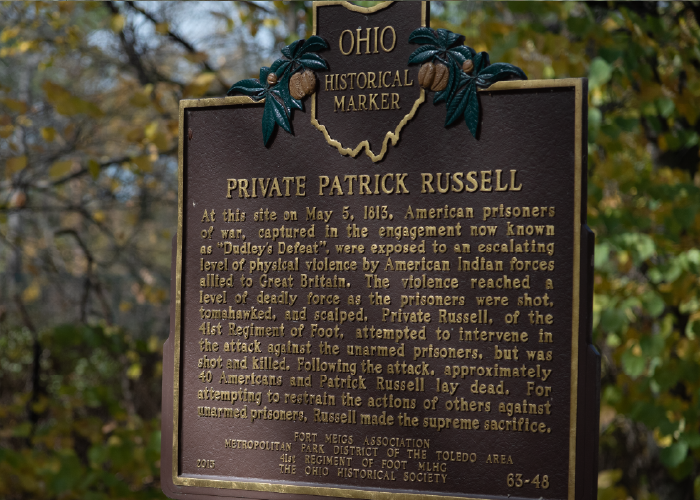
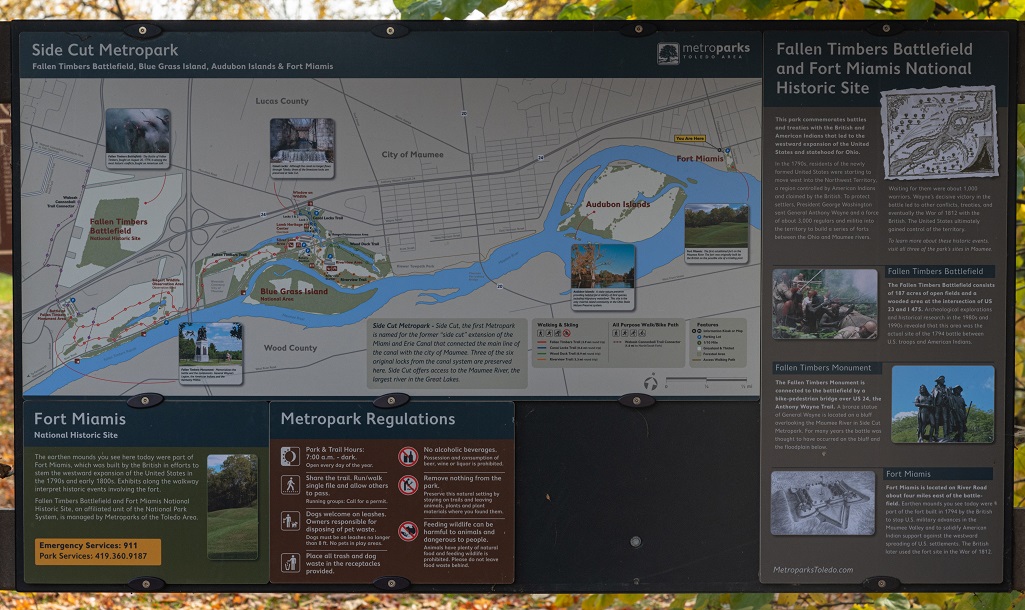
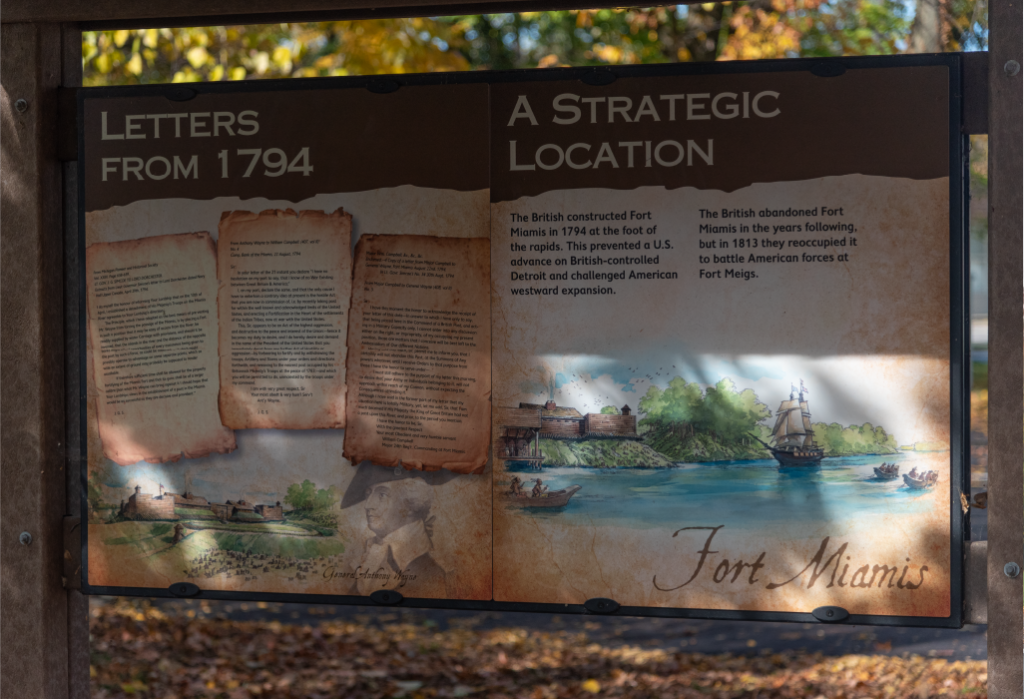
41st Regiment of Foot - War of 1812
This marker honors members of the 41st Regiment of Foot who died during an engagement at the British encampment during the First Seige of Fort Meigs. It was erected in 2013 by the Fort Meigs Association, the Metropolitan Park District of the Toledo Area, the 41st Regiment of Foot MLHG and The Ohio Historical Society.
The text reads:
Near this site, in the War of 1812, stood the British encampment during the First Seige of Fort Meigs from May 1-9, 1813. This marker honors members of the 41st Regiment of Foot who died during the engagement. Killed in action on May 5, 1813 were Privates James Barkley, Richard Booth, William Carpmail, Samuel Cartledge, John Cox, Benjamin Dorman, John Dyer, Edward Graves, and Patrick Russell. Private Edward Billing died of wounds from battle May 6 and Private John Chamberlane expired May 20.
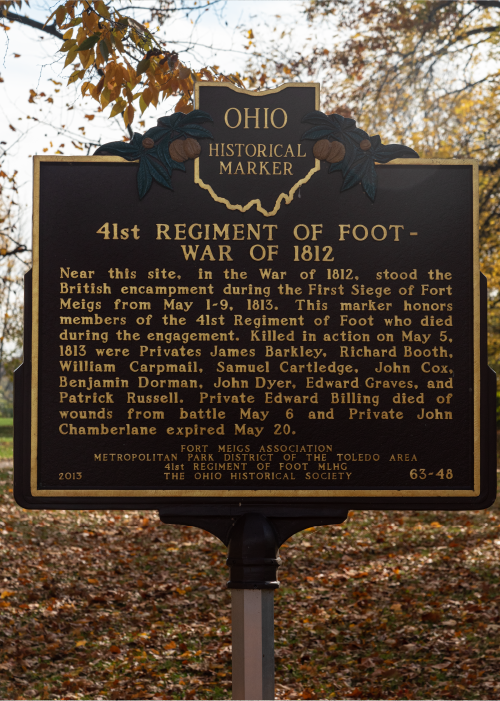
Fort Miamis
This marker describes the origin of Fort Miamis in 1794 and its role as a British stronghold in the final years of the Indian Wars and again during the War of 1812. It was erected in 1955 by The Historical Society of Northwest Ohio.
The text reads:
On this site in 1794, the British built Fort Miamis to block Gen. Mad Anthony Wayne's expected march on Detroit. Its strategic location commanded both the land and water routes in the Maumee Valley. The post, constructed after the manner of the noted French military engineer, Sebastien Vauban, was essentially an earthwork of ditches and embankments, re-enforced by log stockades and buildings. So impregnable did it appear that Gen. Wayne, after routing the Indians at Fallen Timbers (Aug. 20, 1794) did not attempt to take the garrison. By a provision of The Jay Treaty, Fort Miamis was surrendered to the United States in 1976. in the War of 1812, the site was re-occupied by the British under Gen. Procter and the Indians under Tecumseh when they unsuccessfully besieged Gen. Harrison at Fort Meigs.
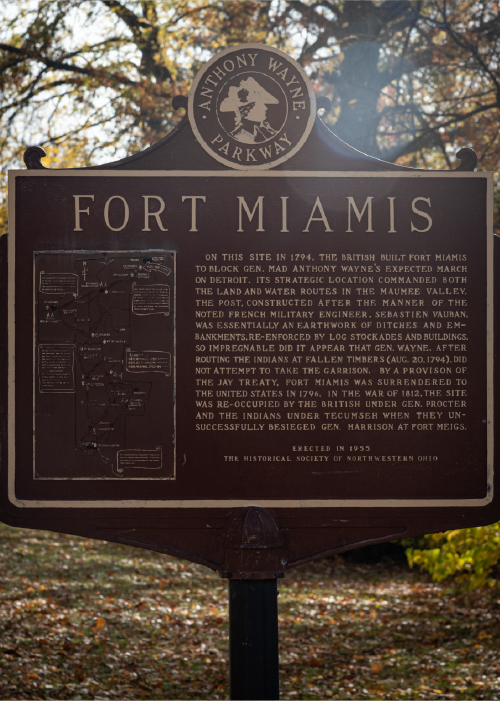
Fort Miamis Illustration
Fort Miamis was designed and built by Royal Engineers in 1794 to defend land and water routes to Fort Detroit against a feared attack from American forces under General Anthony Wayne. Construction was never completed by the British, nor the Americans who later occupied the site, and no plans for the fort survived.
This illustration, created by R.K. Reed and shared with the permission of Toledo Metroparks, shows the fort as it existed on the west bank of the Maumee River, fortified by four diamond-shaped earthen walls -- called bastions -- and a 24-foot deep trench lined with rows of stakes.
Today, some of the trenches, traces of the earthen walls and one of the bastions are all that remain visible.